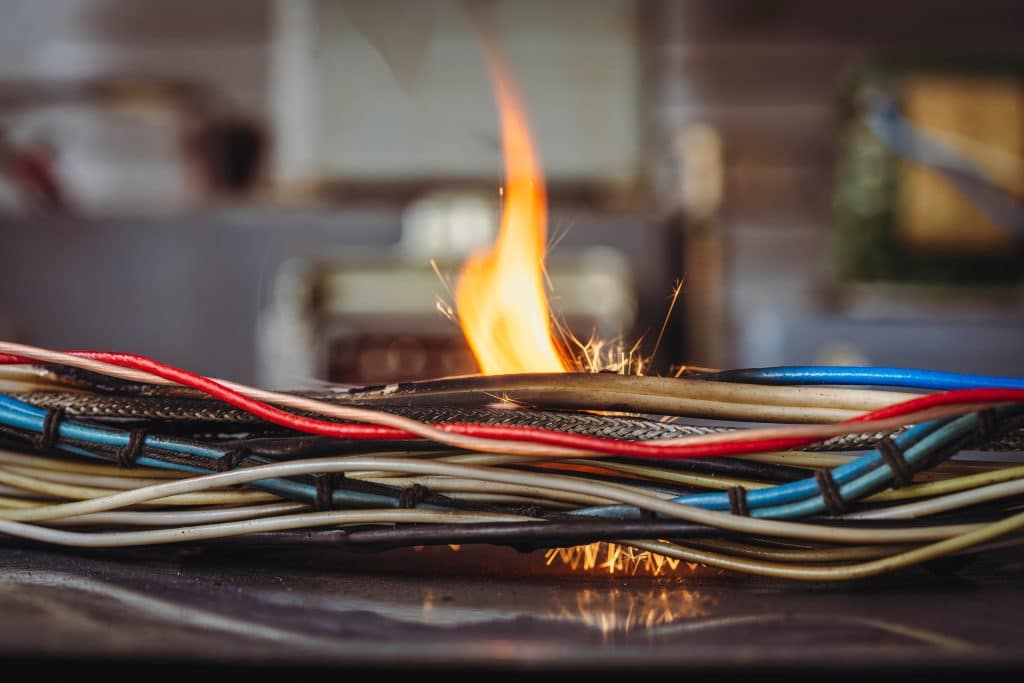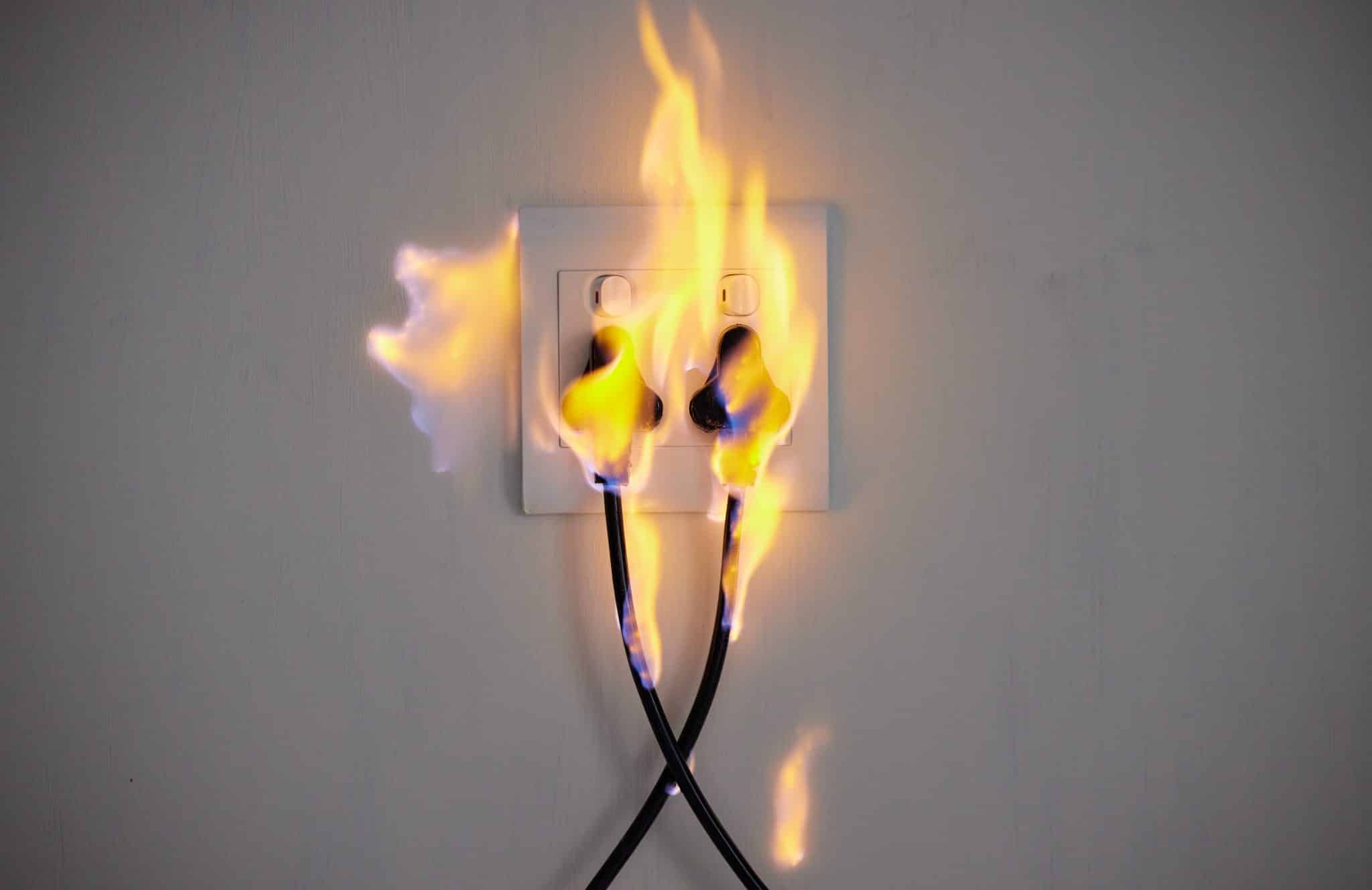Electrical problems can strike suddenly, often when you least expect them. The confusion and urgency that follow can be overwhelming, especially when every second counts. In these moments, staying calm isn’t enough—you need to act with purpose and caution.
Understanding how to respond safely can make all the difference between a close call and a dangerous situation. Read on to learn how to stay safe during electrical emergencies at home and protect what matters most.
Do Not Use Water to Handle Flames
If an electrical fault triggers a small fire, reacting quickly is important—but so is reacting safely. Water might seem like the obvious solution, but using it can put you in greater danger. Electrical fires need a different approach.
To handle small electrical fires safely, consider the following:
- Use a Class C fire extinguisher: These extinguishers are made specifically for electrical fires. They interrupt the fire’s chemical reaction without conducting electricity. Make sure yours is properly labeled and regularly inspected.
- Never use water or wet items: Water and electricity are a dangerous mix. Throwing water or even a damp cloth on an electrical fire can result in electric shock. Keep liquids far from sparking or burning appliances.
- Know your extinguisher’s location: Fire extinguishers are most useful when they’re within reach. Store one near high-risk areas such as kitchens, workshops, or rooms with heavy appliance use.
- Check the extinguisher’s charge: An extinguisher that isn’t charged won’t help in an emergency. Inspect the gauge monthly and replace it if it’s no longer in the green zone.
If you’re unsure about what type of extinguisher you have or whether it’s safe to act, step back and call for help. Hiring a local electrician Mt Eliza or another trusted provider in your area can ensure your home is evaluated and any damage is repaired safely.
Turn Off the Power if It’s Safe
If something starts to go wrong, one of the smartest first steps—when it can be done without risk—is cutting the power. This can help stop the problem from getting worse.
To safely shut things down without putting yourself in harm’s way, the following are important steps to consider:
- Use the main switch only if you’re dry and stable: Head to your switchboard and flip the main control to the “off” position. Make sure your hands are completely dry, your feet are planted, and the floor beneath you isn’t damp. If you feel even slightly unsure, skip this step and get help.
- Leave damaged items alone: If something looks burned, melted, or cracked, don’t touch it—not even to unplug it. Pulling cords from the wall or trying to reset anything at this stage can make things worse.
- Don’t use metal or wet tools: If you need to move something out of the way and suspect it may still carry current, don’t reach for kitchen tongs or a broom with a metal tip. A dry, smooth wooden stick is a better alternative—but only if there’s no heat or smoke nearby.
Cutting the power quickly—when it’s clearly safe—can give you a chance to take a breath, look around, and figure out what needs to happen next. If anything feels off, it’s smarter to stay back and let a licensed local professional step in.

Keep a Safe Distance from Smoke or Sparks
If something starts to smoke, spark, or make strange noises, don’t wait to see what happens next. These signs usually mean something is seriously wrong. To stay safe when this happens, the following are important actions to take:
- Leave the area right away: Sparks can ignite nearby materials with little warning. Don’t try to examine the source or fix it. Get away from the area as quickly as possible, even if the issue seems small.
- Shut the door behind you: If you’re inside a room when you notice the problem, closing the door as you leave can help slow the spread of smoke or fire. This gives others in the house more time to respond or evacuate.
- Avoid breathing what’s in the air: Smoke from these incidents can irritate your lungs and eyes or even make you feel sick. Cover your mouth with a dry cloth if needed and avoid inhaling deeply.
Even if the issue looks minor, treat it as a warning sign and mentally prepare for a fire. Staying back and alert is one of the most effective ways to avoid injury when something electrical goes wrong. Let trained professionals handle the rest.
Use Backup Lighting and Communication Devices
When the lights go out suddenly, being caught off guard can add stress to an already tense situation. Staying prepared helps you move safely and stay connected.
To keep your home safe and functional during unexpected darkness, the following are key steps you should take:
- Place flashlights where you can reach them easily: Keep battery-powered lights in spots you can get to without searching—inside nightstands, kitchen drawers, or hallway cabinets. Avoid storing them in cluttered or hard-to-reach areas.
- Keep lanterns in common areas: A portable LED lantern can light up an entire room. Set one in living spaces or near staircases so you’re not walking blind when power cuts out.
- Use headlamps for hands-free movement: Headlamps free up your hands while you check on others or handle basic tasks. They’re especially helpful if you need to check the switchboard or walk through tight spaces.
Keeping a flashlight handy and communication lines open helps preserve not just peace of mind but a safe home. Staying lit and connected helps reduce confusion, lowers the chance of injuries, and gives you time to plan your next steps with a clear head.
Final Thoughts
In the face of electrical emergencies, your response can significantly impact the outcome. Staying calm, being prepared, and knowing how to act in the moment can prevent serious harm. While some situations require quick thinking, others may call for professional assistance—never hesitate to seek help if needed.








